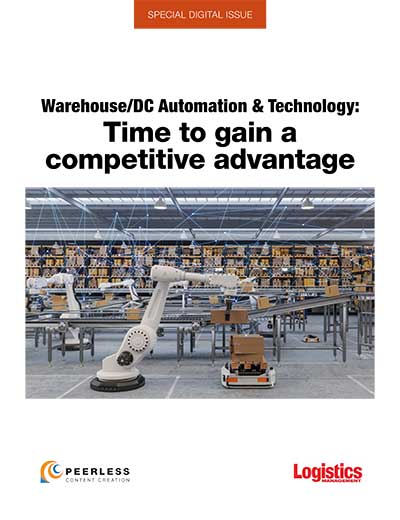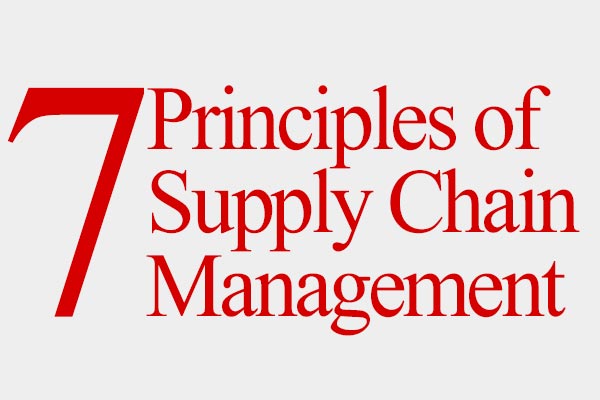Supply Chain and Logistics Technology: Time to get on board with TMS
Adoption rates for transportation management systems (TMS) hover around 37 percent, yet the systems have proven to be game-changing, cost-saving freight facilitators. If you’re still dragging your feet, here’s some food for thought.
Transportation management systems (TMS) came on the supply chain scene in 1980s, promising to make the movement of freight between trade partners easier and cheaper. Since that time, the systems have evolved significantly and are now available as standalone software packages, integrated into broad-based enterprise resource planning (ERP) systems, or are easily accessible online in Software-as-a-Service (SaaS) formats.
Regardless of the deployment chosen, TMS has a proven track record of helping companies efficiently and cost-effectively move freight from origin to destination. Able to handle everything from parcels to bulk commodities, TMS now encompasses solutions for moving freight in all modes, including intermodal movements.
“The TMS processes include freight transported inbound or outbound, domestically or internationally, using transportation assets the company owns (via fleet management) or that are owned by an outside service provider (using planning and execution),” says Steve Banker, director of supply chain solutions for analyst firm ARC Advisory Group.
But if TMS has so much going for it, why haven’t more shippers jumped on board? According to Logistics Management’s (LM) 2012 Supply Chain Software User Survey, just 37 percent of respondents said they’re currently using TMS, versus 32 percent in 2011, while 25 percent are planning to buy/upgrade.
In this article we will examine TMS’ low adoption rates and show why shippers who overlook this supply chain software segment are missing out on both cost savings and increases in efficiency. With fuel costs and capacity crunches around the next corner, we’ll show you why now is the time to invest in a new TMS or optimize a system that’s stagnated over the last few years.
Why such low adoption?
Banker says that TMS’ adoption rates may actually be lower than the 37 percent found in the LM survey. “If I had to take a guess, I’d say adoption rates are closer to 20 percent or less,” says Banker. “I still come across billion dollar companies that don’t have a TMS in place—they’re still handling things manually.”
Those companies are missing the boat, according to Banker, who estimates that a shipper with $100 million in annual freight spend would be able to shave at least 5 percent to 6 percent off of that number with the help of a TMS. “Companies that implement a TMS see very good returns on their investments,” says Banker.
So why aren’t more companies investing in TMS? Banker says that some of the reluctance can be traced back to the fact that such solutions were a good fit for the food, beverage, and retail industries, and not as applicable for others. A company that was shipping carloads of chemicals by train, for example, and to and from a specific destination, had fairly limited optimization opportunities, he says.
“A lot of industry verticals picked up on this and said: ‘I just don’t think transportation management applies to us,’” says Banker, who adds that an updated mindset is in order, thanks to technological advancements and a sharp focus on squeezing maximum benefits and profits from the supply chain.
New optimization opportunities have emerged, says Banker, and new industries—like natural resources—have been investing in TMS. “Even if the ROI isn’t as high as it is for CPG and food and beverage manufacturers,” says Banker, “it’s still very good.”
No longer an afterthought
Rising fuel prices, the new for improved visibility, and the desire to think “globally” has pushed companies to move their transportation costs out of standalone budget mode and into the larger scheme of things.
Now a critical aspect of the supply chain, transportation coordination has gone beyond the fax, e-mail, and phone, and requires a more streamlined, automated approach in order to function at optimal levels—and that’s where TMS comes in.
Available as SaaS on a subscription basis and with no upfront investment, these systems are best known for minimizing freight costs while enhancing route planning and load consolidation. Honed over the years by the vendors that developed them, TMS can also provide order visibility, the ability to handle global freight movement, and the facility to adapt to new requirements and opportunities in the supply chain. Other benefits include access to historical carrier performance data (useful when negotiating new contracts), better load consolidation, and improved asset utilization.
But getting to those benefits requires some elbow grease. Here are five ways that TMS users can milk the maximum benefits out of their system and get the platform working like a well-oiled machine:
1. Centralize activities first. A manufacturer with 10 factories and a real need to optimize its transportation component across the supply chain should start by examining the firm’s operations and centralizing them from a single location.
That way, says Banker, you won’t get 10 different transportation planners doing things their own way. “Centralize before you invest in a TMS and you’ll be able to pick up on optimization opportunities that you wouldn’t see otherwise,” says Banker.
2. Think beyond the obvious dollars and cents savings. The company that’s spending $100 million on transportation annually may be able to whittle that number down to $94 million with the help of a TMS, but there are other benefits to keep an eye on.
Better visibility over shipments can boost customer service significantly, says Banker, and granular cost data can help pinpoint which customers are the most profitable. “You may not save money on transportation,” he says, “but the TMS can significantly change the way you work with certain customers and/or suppliers for the better.”
3. Use TMS to cut down on the complexities. With supply chains becoming increasingly complex and highly reliant on capable transportation systems, managing via phone, fax, and e-mail has become a real burden for companies of all sizes.
“Half the time shippers don’t even know what rates they’re paying because the numbers are scribbled on someone’s credenza,” says Dwight Klappich, research vice president at Gartner.
One complexity that a TMS easily eradicates is the time spent communicating with carriers—a job that could “literally take all day,” according to Klappich. “That’s a job that can be easily automated and made less complex and expensive.” The fact that shippers don’t need a large capital outlay to get up and running with an SaaS-based TMS makes the move even more attractive. “They get all of the benefits of a TMS, and at a reasonable cost,” Klappich adds.
4. Turn to technology to handle the expected capacity crunch. Cyclical in nature, the transportation market is expected to morph as the U.S. economic recovery continues. Accustomed to a “shipper friendly” market, some shippers may be caught off guard by the anticipated capacity crunch. Others will be well equipped to deal with the tighter market, says
Klappich, who expects TMS to play an important role in helping companies navigate the challenging waters.
“It’s going to get to the point where shippers will have to call three or four carriers before finding the necessary capacity,” Klappich predicts. “Doing that manually is going to be tough. Companies will need automated systems like TMS to handle the task and to quickly and efficiently secure the required capacity.”
5. Get to the next level: Inbound and outbound consolidation. Shippers often struggle to get their inbound and outbound logistics—and even their global transportation operations—on the same TMS platform.
Ellen Chen, MOVE practice leader at Capgemini, sees this gap as the perfect opportunity to bring a TMS to the next level and to start squeezing more benefits out of the platform.
“Companies struggle internally to merge the two operations,” says Chen, who sees a lack of C-suite buy-in as another challenge. “Sometimes it’s hard to get the support you need to do the entire rollout across both at the same time.”
But when it does happen—be it at the outset, or over time—she says the overall benefits eked out of the TMS become that much more evident. “It’s an organizational change that takes time,” says Chen, “with most companies getting a big win by rolling out the TMS to multiple divisions and organizations.”
Crystal Ball
As fuel costs continue to rise and as capacity constraints and other challenges affect shippers of all sizes, Banker expects more of them to turn to TMS as a solution to their growing transportation woes. “Adoption rates are picking up,” he says.
Klappich concurs, and says the SaaS model will likely lead the charge, based on its affordability and its appeal to a wide range of shippers—particularly those that are intimidated by the complexity and costs of a traditional setup.
“You could theoretically roll out an SaaS-based TMS and start calling carriers this afternoon without much implementation time,” says Klappich. “Going forward, SaaS will dominate the small- to mid-market, with on-premise systems reserved for the larger shippers.”












